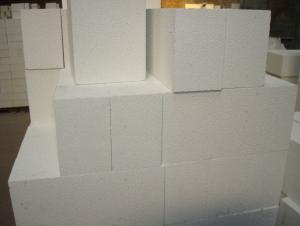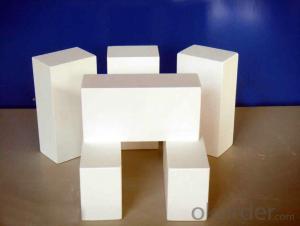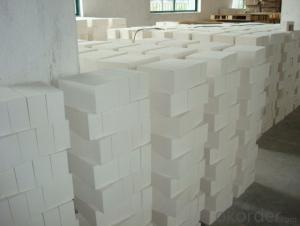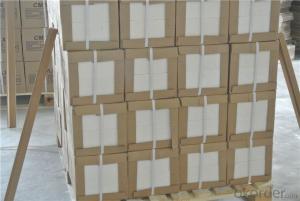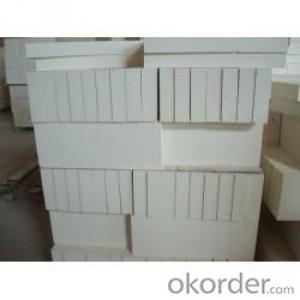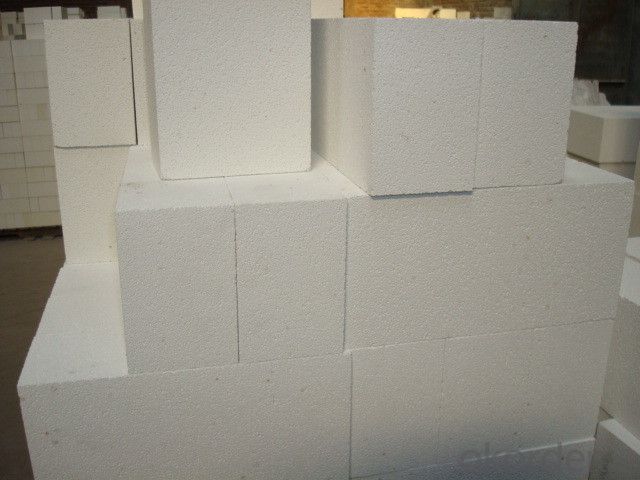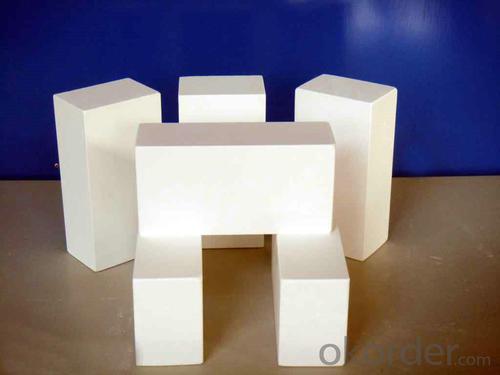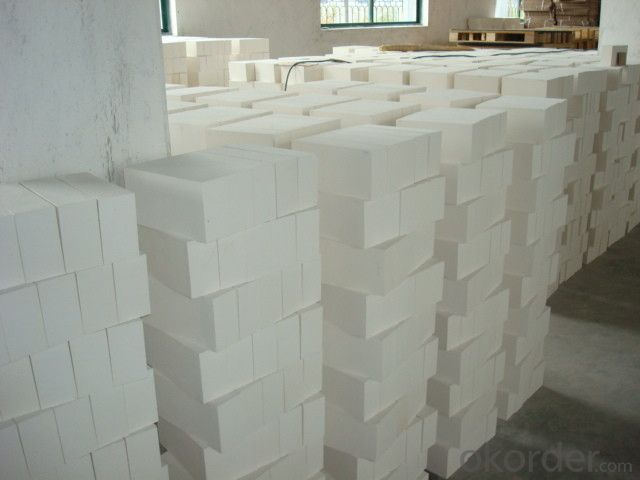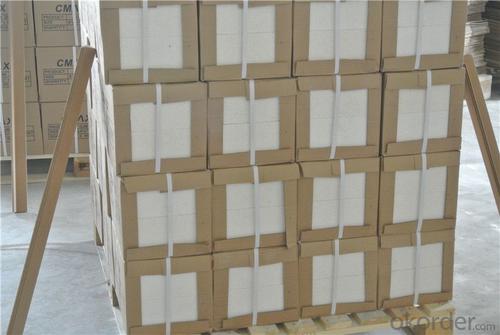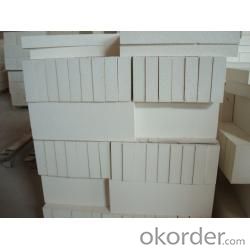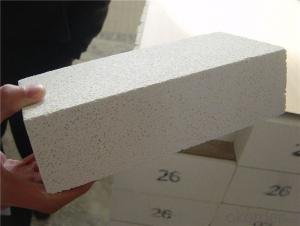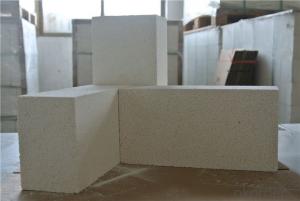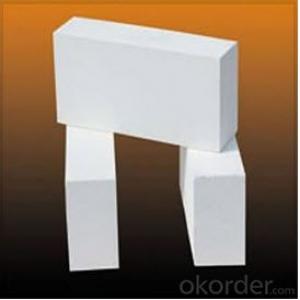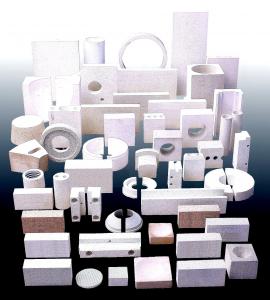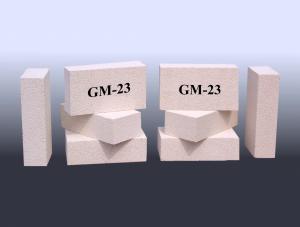Insulating Fire Brick - Lightweight Insulation Refractory Clay for Industrial Furnaces
- Loading Port:
- Shanghai
- Payment Terms:
- TT OR LC
- Min Order Qty:
- 1 m.t.
- Supply Capability:
- 1000 m.t./month
OKorder Service Pledge
OKorder Financial Service
You Might Also Like
Thermal Insulation Fire Clay Brick
Refractory brick is a block of refractory ceramic material used in lining furnaces, kilns, fireboxes, and fireplaces.
We provide high quality Refractory Fire Bricks that are used on wide range in the various industries like Cement, Glass and Steel. Refractory Fire Bricks are provided as per the quantity and specifications required by the customers. We provide an extensive range of Refractory Fire Bricks at reasonable prices that depend upon the quantity ordered.
Application
Insulating Fire Brick are used for the lining of converter, alternating current arc furnace, direct Current arc furnace and the ladle slag line, etc.
Company Advantage
(1)Long Insulating Fire Brick manufacture history: 25 years manufacturer
(2)Advanced equipment
(3)Diversification of production standards: ISO ANSI FEPA JIS ASTM
(4)Flexible payment: T/T L/C D/P D/A
(5)Professional marketing team and after-sale service
Insulating Fire Brick main feature:
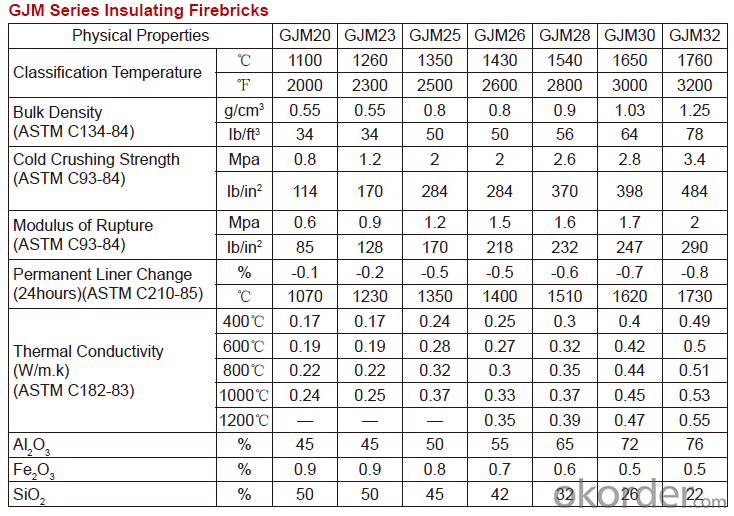
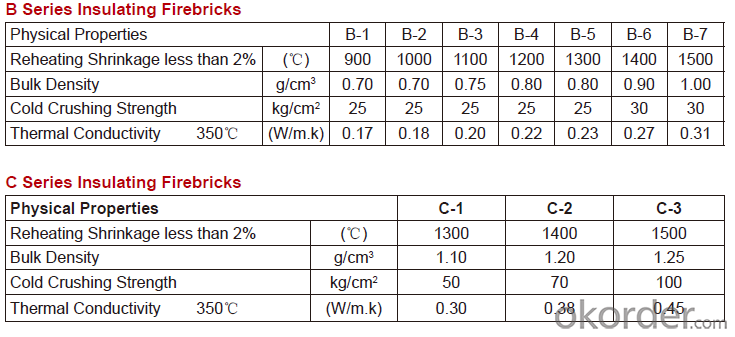
Equipment
1 unit of Ceramic Abrasive (SG Abrasive) pilot production line
2 units of Compact grain Abrasive pilot production lines
1 unit of high-end coated abrasives (abrasive cloth) production line
2 units of Boron Carbide production lines
3 large flexible crushing and sieving lines for grit production lines
6 units of 5000KVA-10000KVA dumping type electric arc furnaces for Brown Fused Alumina fusion
Q1 What’s the transport method?
A1 FCL delivery goods with wooden pallet or wooden case by sea; If LCL delivery, must with wooden case; Sometimes need open top, flat rack or bulk cargo.
Q2 What’s the required payment term?
A2 Generally 30% TT as the prepayment, 70% TT before delivery. If need, 100% Irrevocable Letter of Credit or negotiation.
Q3 Which country are our products exported to?
A3 Apart from entire Chinese market, the US, Russia, Japan, Korea, Australia and some Southeast Asian Nations.
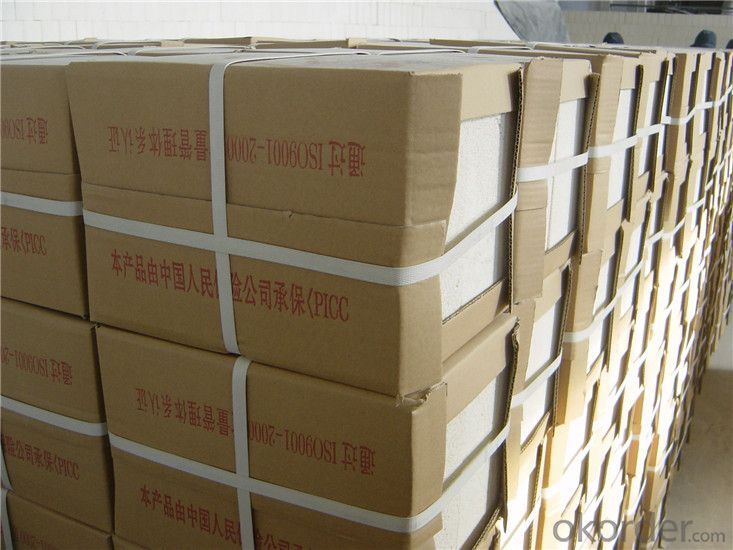

- Q: Can insulating fire bricks be used for insulation in walls or roofs?
- Insulating fire bricks are primarily designed for use in high-temperature applications, such as furnaces, kilns, and fireplaces. While they offer excellent thermal insulation properties, they may not be the best choice for insulation in walls or roofs of residential or commercial buildings. Insulating fire bricks are often made from lightweight refractory materials, such as ceramic fibers or expanded clay. These materials are highly resistant to heat, but they may not provide sufficient insulation against cold temperatures or moisture. Additionally, their structural integrity may not be suitable for load-bearing applications or other requirements specific to walls or roofs. For insulation in walls or roofs, it is generally recommended to use materials specifically designed for building insulation purposes, such as fiberglass batts, spray foam insulation, or rigid foam boards. These materials are better suited to provide both thermal and moisture resistance, as well as meet the necessary structural requirements. In summary, while insulating fire bricks may offer excellent thermal insulation properties, they are not typically recommended for use in walls or roofs. It is advisable to consult with a building professional or insulation specialist to determine the most suitable insulation materials for your specific needs.
- Q: Can insulating fire bricks be used in rocket stove designs?
- Insulating fire bricks are capable of being incorporated into the designs of rocket stoves. Rocket stoves are renowned for their efficient combustion and heat transmission, and the utilization of insulating fire bricks can enhance this level of performance. These bricks are produced from lightweight materials that possess excellent insulating properties, allowing them to effectively retain and reflect heat. The combustion chamber of a rocket stove is typically lined with insulating fire bricks in order to maximize the transfer of heat to the cooking surface or the area being heated. The bricks aid in the retention of heat within the combustion chamber, ensuring that a greater portion of the energy generated from the burning fuel is utilized to heat the cooking surface, rather than being dissipated into the surrounding environment. Moreover, insulating fire bricks are capable of enduring high temperatures, making them an ideal choice for inclusion in rocket stove designs. They are specifically engineered to withstand the intense heat generated by the combustion process, guaranteeing that the bricks will not fracture or shatter under such circumstances. In conclusion, the incorporation of insulating fire bricks into the designs of rocket stoves can enhance the efficiency and heat transmission of the stove, resulting in a more efficient and sustainable solution for cooking or heating purposes.
- Q: What are the advantages of using insulating fire bricks over other insulation materials?
- There are several advantages to using insulating fire bricks over other insulation materials. Firstly, insulating fire bricks have a high thermal conductivity, meaning they can effectively insulate against heat transfer. This makes them ideal for applications where heat containment is crucial, such as in furnaces, kilns, and industrial ovens. Their ability to withstand high temperatures and prevent heat loss makes them a reliable choice for insulation. Secondly, insulating fire bricks are highly durable and resistant to wear and tear. They are made from high-quality refractory materials, which are designed to withstand extreme conditions, including thermal shocks and chemical exposure. This durability ensures a longer lifespan and reduces the need for frequent replacements or repairs. Another advantage is their versatility. Insulating fire bricks come in various shapes and sizes, allowing for easy customization and installation in different applications. They can be easily cut or shaped to fit specific requirements, making them suitable for complex geometries or curved surfaces. This flexibility allows for efficient insulation in a wide range of settings. Moreover, insulating fire bricks have excellent insulation properties even at lower densities. This means that they can provide optimal thermal insulation while also reducing the overall weight of the structure. This is particularly advantageous in industries where weight reduction is critical, such as aerospace or automotive manufacturing. Lastly, insulating fire bricks are environmentally friendly. They are typically made from natural and recyclable materials, minimizing their impact on the environment. Additionally, their long lifespan and low maintenance requirements contribute to sustainability by reducing waste generation and energy consumption. In conclusion, the advantages of using insulating fire bricks over other insulation materials include high thermal conductivity, durability, versatility, lightweight, and environmental friendliness. These characteristics make them a preferred choice for insulation in various industries and applications.
- Q: Can insulating fire bricks be used in the construction of incineration kilns?
- Yes, insulating fire bricks can be used in the construction of incineration kilns. Insulating fire bricks are designed to have excellent thermal insulation properties, which make them ideal for applications where high temperatures are encountered, such as incineration kilns. These bricks are capable of withstanding extreme temperatures and offer insulation to minimize heat loss, resulting in improved energy efficiency and reduced fuel consumption. Additionally, insulating fire bricks are lightweight, easy to handle, and can be easily shaped and installed in various configurations, making them suitable for constructing the complex geometries often found in incineration kilns. Overall, using insulating fire bricks in the construction of incineration kilns can enhance their thermal performance, increase their durability, and contribute to more efficient and effective waste management processes.
- Q: Are insulating fire bricks resistant to weathering?
- Insulating fire bricks have remarkable resistance to weathering. Crafted from top-notch refractory materials, these bricks are engineered to endure severe temperatures and rugged weather conditions. They are designed to exhibit exceptional resistance against thermal shock, erosion, and corrosion induced by exposure to diverse weather elements like rain, snow, wind, and sunlight. Moreover, insulating fire bricks possess resistance to chemical assaults, establishing their durability and suitability for long-term outdoor applications. In summary, the formidable composition and weathering resilience of insulating fire bricks render them a dependable option for insulation and construction needs in outdoor settings.
- Q: Do insulating fire bricks have a high fire resistance rating?
- Yes, insulating fire bricks have a high fire resistance rating. Insulating fire bricks are specially designed to withstand high temperatures and provide excellent insulation against heat transfer. They are made from high-purity refractory materials, such as alumina and silica, which have a high melting point and can withstand extreme heat. These bricks are capable of withstanding temperatures of up to 3000°F (1650°C) and have a thermal conductivity that is much lower than regular bricks or other materials. This makes them ideal for use in applications where high fire resistance is required, such as in industrial furnaces, kilns, fireplaces, and chimneys. Additionally, their insulating properties help to reduce heat loss, making them energy-efficient and cost-effective.
- Q: Can insulating fire bricks be used for insulation in glass manufacturing?
- Yes, insulating fire bricks can be used for insulation in glass manufacturing. Insulating fire bricks are designed to have excellent thermal insulation properties, high heat resistance, and low thermal conductivity. These characteristics make them suitable for applications where high temperatures need to be maintained or controlled, such as in glass manufacturing processes. The use of insulating fire bricks in glass manufacturing helps to reduce heat loss and improve energy efficiency. By insulating the furnace or kiln, the bricks prevent excessive heat from escaping, thereby reducing the energy required to maintain the desired temperature. This not only saves on energy costs but also helps to create a more stable and controlled environment for the glass manufacturing process. Furthermore, insulating fire bricks can withstand the extreme temperatures typically involved in glass manufacturing, making them a reliable choice for insulation. They can withstand temperatures up to 3000 degrees Fahrenheit (1650 degrees Celsius), ensuring the bricks remain structurally intact and effective in insulating the furnace or kiln. In summary, insulating fire bricks are a suitable choice for insulation in glass manufacturing due to their excellent thermal insulation properties, high heat resistance, and low thermal conductivity. They help to improve energy efficiency, maintain stable temperatures, and create a controlled environment for the glass manufacturing process.
- Q: Do insulating fire bricks have a high heat storage capacity?
- Insulating fire bricks possess a remarkable capacity for storing heat. These bricks are engineered to possess minimal thermal conductivity, enabling them to preserve heat for extended durations. Consequently, they are extremely well-suited for scenarios that demand heat retention, such as within furnaces, kilns, and other settings with elevated temperatures. The impressive heat storage capacity of insulating fire bricks facilitates effective heat preservation and dispersion, ultimately enhancing energy efficiency and lessening heat dissipation.
- Q: Can insulating fire bricks be used in crucibles?
- No, insulating fire bricks cannot be used in crucibles. Insulating fire bricks are designed to have low thermal conductivity and are commonly used for insulation purposes in applications such as kilns, furnaces, and fireplaces. However, crucibles require materials with high thermal conductivity and resistance to high temperatures to withstand the intense heat and chemical reactions that occur during various processes such as melting or refining metals, conducting high-temperature experiments, or performing chemical reactions. Therefore, crucibles are typically made from materials such as graphite, clay, or ceramic, which can withstand the extreme conditions and provide efficient heat transfer.
- Q: Can insulating fire bricks be used in high-temperature insulation applications?
- Yes, insulating fire bricks can be used in high-temperature insulation applications. Insulating fire bricks are designed to withstand and retain heat at elevated temperatures. They have low thermal conductivity and high insulation properties, making them ideal for use in applications where high temperatures need to be contained and insulated. These bricks are commonly used in industries such as steel, glass, and ceramics, as well as in furnaces, kilns, and other high-temperature equipment. Insulating fire bricks provide a reliable and efficient solution for insulation in high-temperature environments, helping to maintain heat and reduce energy loss.
Send your message to us
Insulating Fire Brick - Lightweight Insulation Refractory Clay for Industrial Furnaces
- Loading Port:
- Shanghai
- Payment Terms:
- TT OR LC
- Min Order Qty:
- 1 m.t.
- Supply Capability:
- 1000 m.t./month
OKorder Service Pledge
OKorder Financial Service
Similar products
Hot products
Hot Searches
Related keywords
